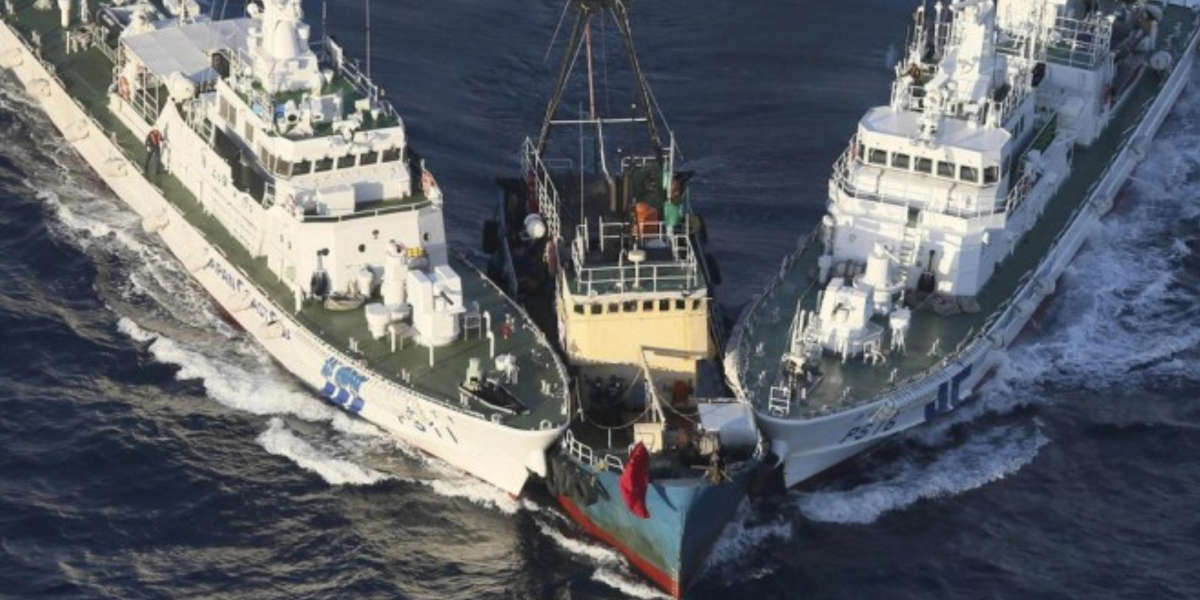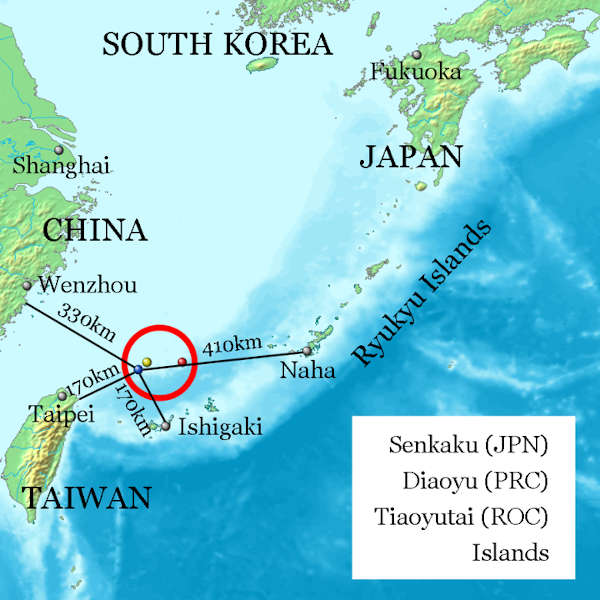In the image
Japanese Coast Guard vessels interdict a Chinese fishing vessel near the Senkaku Islands [JCG]
The ongoing Russia-Ukraine War has not only shaken world order, but it has also heightened political tensions in East Asia, where China’s assertiveness is looked with more suspicious eyes. After Russia has invaded and retained what the Kremlin argues it is part of the Russian nation, China could arguably do the same in the East and South China Sea. Japan and China dispute the Senkaku/Diaoyu Islands and the Japanese government is taken steps to strengthen its military capabilities.
The Senkaku Islands (Japanese name), also known as the Pinnacle/Diaoyu Islands are a group of eight uninhabited islands in the East China Sea between Taiwan and the Japanese archipelago of Okinawa. The United Nations Economic Commission for Asia and the Far East –established to aid in post-war economic reconstruction– discovered in 1968 what may be the world's largest hydrocarbon reserves in the seabed of these islands, sparking the start of the conflict.
Granting sovereignty over the islands would grant the controlling entity the exclusive right to develop an Exclusive Economic Zone of 200 nautical miles encircling the islands, enabling the extraction and utilization of the potential hydrocarbon resources within this maritime domain. The Senkaku Islands are located 190 nautical miles away from Okinawa’s closest coast, 200 nautical miles away from China’s east coast, and 120 nautical miles away from Taiwan’s coast.
On the one hand, Beijing claims that the Senkaku Islands had been under Chinese rule at the very least since 1534 when the Diaoyu Islands were mentioned as part of China, during the Ming and Qing periods. Chinese fishermen would frequent the waters around the Senkaku Islands back then. At that time, the Diaoyu Islands were placed under Taiwanese jurisdiction. The Diaoyu Islands were also mentioned as Chinese by foreigners such as the British Royal Navy in 1877.
However, on the other hand, Japan would declare the land as terra nullius (i.e. not showing any indications of being governed by a state and uninhabited). These islands would be annexed to Japan in 1895 as part of the Okinawa prefecture. After its incorporation into Japan, several Japanese families moved to the islands to exploit the bonito fish business.
After Japan’s loss in WW2, the US gained control over the Ryukyu islands, including Okinawa and therefore the Senkaku Islands. Japan also signed a new Constitution, containing the unique Article 9, also known as the Pacifist Clause, where Japan renounced its right to wage war and to have its military, only being able to possess Self-Defense Forces.
The Chinese and Taiwanese base their argument on the return of the administration of the Okinawa archipelago in 1972 by the United States, where they claim that given that the Senkaku Islands had been conquered by Japan during their imperial rule, it had to be given back to its original owner, China.
Despite their longstanding political differences, China and Taiwan share a common position on the Senkaku Islands dispute. However, Taiwan’s position is especially complicated by the historical circumstance that the ROC was forced to withdraw to the island of Formosa (Taiwan) in 1949, and the mainland’s policy has been strictly regarded ever since as ‘One China’. This, coupled with Taiwan’s current de facto status quo, relegates Taiwan to a limited agent within the geopolitical sphere, constrained to reaching agreements with China in view of their joint position.


